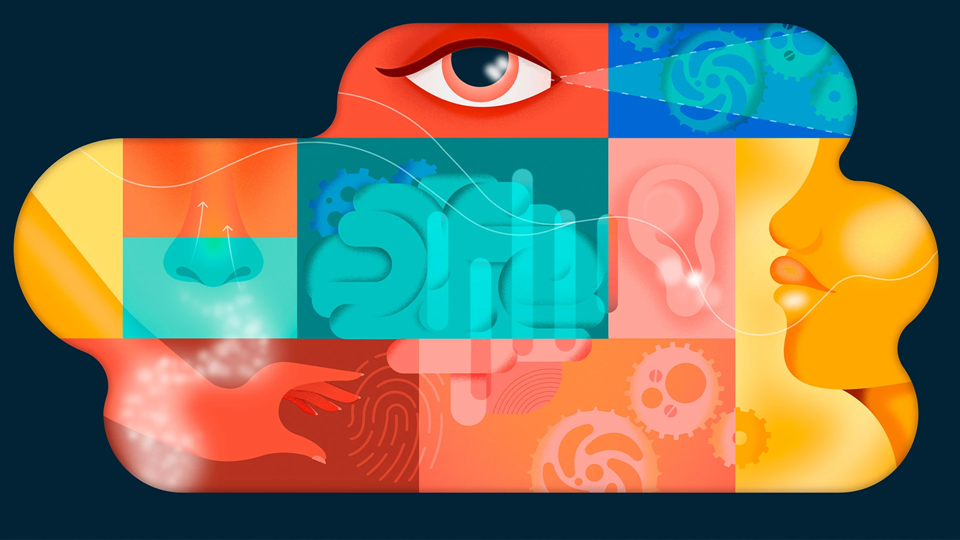Five Trends Shaping the Future of Our Senses
The rapid advancement of technology with a wave of startups and researchers are transforming how we experience and augment our senses
BY Chandra Johnson Greene for VSP VISION
The Internet of Senses, encompassing technologies designed to enhance and digitize sensory experiences, is projected to grow from $16.95 billion in 2023 to $83.6 0 billion by 2030. This growth is driven by innovation in haptic devices (set to triple in size by 2030), virtual reality headsets, and spatial computing (startups securing substantial equity funding), all contributing to an evolving sensory landscape.
VSP Vision™, a leader in health-focused vision care, is at the forefront of this movement. The VSP® Global Innovation Center researched how advancements in sensory technology can complement vision to improve overall well-being and quality of life. Their latest report, The Future of Senses, explores five transformative trends that are paving the way for a new era of human experience.
TREND 1: TECH-ENABLED SENSES HEIGHTEN THE HUMAN EXPERIENCE
Advancements in sensory technology are enhancing, and in some cases, replacing natural senses. With a growing investment in wellness services and technologies—expected to reach $8.5 trillion by 2027 according to the Global Wellness Institute—individuals are achieving new levels of performance and well-being. Innovations like neurostimulation can enhance touch, hearing, and vision, while eye-tracking technologies enable hands-free device interaction. Virtual reality is being used for managing chronic pain and treating mental health issues.
TREND 2: DIGITIZED SENSES UNLOCK A VALUE CHAIN
According to the Internet of Senses Institute, the digitization of the senses is creating new business models and experiences that consumers are increasingly demanding.
According to a 2023 VML report, approximately six out of ten consumers desire multisensory engagement from businesses with eight out of ten expecting new experiences.?
In advertising, multi-sensory campaigns are fostering stronger emotional connections with consumers. On the retail front, haptic technology enables immersive, tactile experiences through online shopping experiences. In healthcare, digitized sensory diagnostic screenings and tests allow for comprehensive, multi-sensory patient care, enhancing outcomes and patient satisfaction.
TREND 3: The BRAIN-TO-SENSE RELATIONSHIP AIDS IN DISEASE DETECTION
?Eyes have long been a window into overall health, able to reveal signs of more than 270 systemic and chronic diseases, including diabetes, cardiovascular issues, aneurysms, and blood cancers. With AI, this capability is expanding. According to CB Insights, companies utilizing AI for disease detection?? have raised over $1.8B in equity funding since 2020.??

AI is also uncovering new ways our senses relate to brain health, allowing new sense-based diagnostic techniques and tools to emerge, such as the detection of cognitive decline through smell and taste and the assessment of brain health through a hearing test.
TREND 4: SENSORY SUBSTITUTION TECHNOLOGY SUPPORTS DISABILITIES
Emerging technologies, such as virtual and mixed reality headsets and AI-enabled haptics devices, are transforming sensory substitution for individuals with disabilities.? Over 2.5 billion people need at least one assistive product, according to UNICEF and WHO. Innovations like a wristband translating sound into vibrations for the hearing impaired or AI-navigation glasses for the visually impaired, are bridging the gap between different senses while brain-to-computer interface establishes a direct pathway between the brain’s electrical signals and external devices. This technology empowers individuals with limited mobility to control digital prosthetics using their thoughts.?
TREND 5: AI ENSURES SAFETY SENSORY TECHNOLOGIES
When combined with sensory technologies, AI significantly enhances human health and security.? AI-driven sensory technology processes inputs like sound or smell to convert them into valuable information.
For instance, AI security startups, which received $130.7 million in funding in the first nine months of 2023, utilize voice authentication technology to identify deepfake calls. Olfactory tech advancements enable AI systems to identify odors, aiding in food safety protocols and bomb detection capabilities.? For more detailed insights, download VSP Vision’s “Future of Senses” Futurist Report here.
By exploring these trends, it’s clear that the intertwined evolution of sensory technology and AI holds immense potential to enhance our daily lives, boost industries, and address vulnerabilities, paving the way for a new era of human experience.
(6)
Report Post





